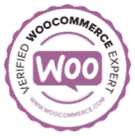3 Ways Your ECommerce Store’s Photography May Be Failing, And What You Can Do to Fix It
One of the worst things that you can do when running an online store is put your product photography on the back burner. While online stores are more popular than ever (and that trend is not likely to stop any time soon), brick-and-mortar shops still have one distinct advantage: customers can go to their store and can see the product in person. This advantage is even more pronounced when you sell products like clothes or accessories. Look at it like this: you’re selling t-shirts online, and someone finds your site and makes a purchase. The customer believes he purchased a white t-shirt because that’s what the product looked like on the product page. But the customer will be surprised to discover that the product is actually a light beige t-shirt. This is something that will cause customer dissatisfaction, and it may cause the customer to ask for a refund. Even if you properly described the t-shirt as light beige on the product page, that doesn’t mean that everyone will read that description. At the end of the day, it’s your responsibility to post accurate pictures.
There are common ways that poor product photography can fail you, so we’re going to discuss the best solutions for this problem.
- Your Photos Are Tiny
Small photos don’t display the level of detail that you need. You want to display the visuals of your product with as much detail as possible. Doing otherwise would imply that you have something to hide, or that your products are not that great. Photos give a concrete idea of what the customer should expect when he receives a product. Otherwise, you are leaving it to the customer to imagine what the product is going to look, which may lead to disappointment.
Your photos should be high resolution, and there should be a zoom option. The ability to zoom in and view products up close will allow the customer to see more details, and it will allow them to make a better decision on purchasing a product. If someone buys a product with poor photos and sees that it is not what they expected, there’s a high potential for a refund.
- Using Messy, Loud Photo Backgrounds
In most cases, you will want to use a consistent background for all of your photos. If you don’t know what color background to choose, using white or gray will almost always work. Light, low-key colors work because it won’t overpower the rest of the image. The product should be in the spotlight, and keeping a clean background will reduce the clutter and the noise.
- Your Photos Are Not Color-Accurate
Color inaccuracies can lead to displeased customers. If the real product is not the same color as it is in the photo, customers are not going to receive what they expected. To avoid this, ensure that product photos are shot with a high quality camera with the proper settings.
Conclusion
Have you been making these mistakes? Product photography can often be afterthought, but it shouldn’t be. Don’t let poor photos derail your store. Start using high quality photos to boost your conversions and reduce refunds.
Are you ready to discuss your next ecommerce website project with the leader in WooCommerce website development and digital marketing? If so, contact Zen Agency today! We are a group of WooCommerce experts.


















